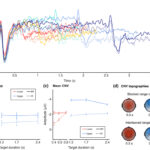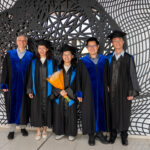“During a lunch break, you open a cup of instant noodles, pour hot water over the noodles, cover, and wait. Time to open depends on your desired noodle softness and the sense of passage of time. Too early, noodles not ready. Too late, noodles too soft.” Baykan and Shi (2022) began their commentary on a recent study by Ofir and Landau (2022, Current Biology), who showed that in a temporal bisection task, the offset P300 or P3b was closely related to the temporal decision boundary. They showed that amplitude of the offset P3b decreased linearly when the duration was close to the “short” reference, but leveled off when the duration was close to the “long” reference, which was closely related to the bisection point. Interestingly, the bisection point is context-dependent. The offset P3b showed similar amplitude patterns for the sub-second and sup-second bisection tasks. This is consistent with our recent finding that the bisection point is driven by the background context, such as stimulus spacing and ensemble statistics (Zhu et al., 2021).
References
- Baykan, C., & Shi, Z. (2022). Temporal decision making: it is all about context. Learning & Behavior. https://doi.org/10.3758/s13420-022-00568-8
- Zhu, X., Baykan, C., Müller, H. J., & Shi, Z. (2021). Temporal bisection is influenced by ensemble statistics of the stimulus set. Attention, Perception & Psychophysics, 83(3), 1201–1214. https://doi.org/10.3758/s13414-020-02202-z
- Ofir, N., & Landau, A. N. (2022). Neural signatures of evidence accumulation in temporal decisions. Current Biology: CB, 32(18), 4093–4100.e6. https://doi.org/10.1016/j.cub.2022.08.006




